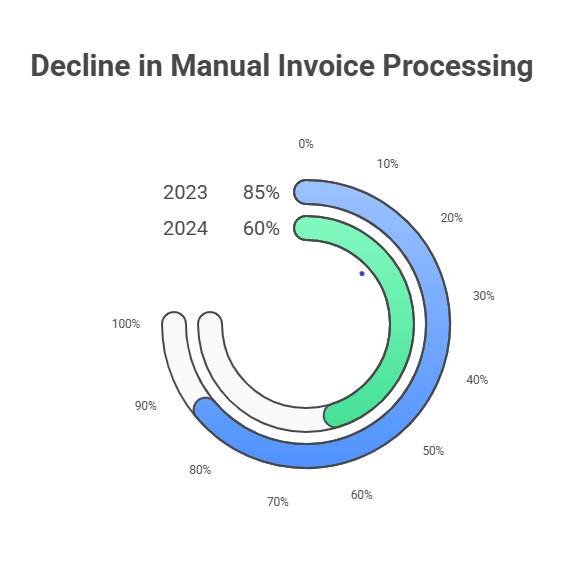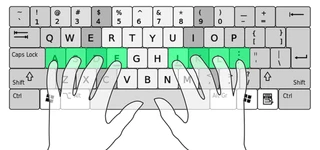Every business that has ever been built has one core goal, which is earning money, and that too on time. The faster the cash flow, the more a business will grow.
But what if you don’t get paid on time? Your biggest dream will turn into a daily struggle.
But as every problem has a solution, automating your accounts receivable can be of use in resolving cash flow challenges.
This guide is all about AR automation and its other aspects. It has also discussed the top AR tools that could help you get faster payments.
Let’s begin!
Understanding Accounts Receivable Automation
Accounts Receivable (AR) automation refers to streamlining the AR workflow using automated tools. So, what processes can be automated?
- Invoicing
- Sending payment reminders
- Collecting payments
- Payment tracking
- Generating reports and more
However, it does not eliminate manual intervention, but with a few clicks, accountants can save time on repetitive tasks.
For example, you can send automated reminders for overdue payments automatically, but you have to manually add the message and set your preference for how many days you want to send them.
Although a little manual work is required, you can still save a lot of time and resources.

SetuFi
Starting Price
Price on Request
How AR Automation Works?
Accounts receivable automation uses software to generate and send invoices and track paid/overdue invoices with little manual effort. This software uses machine learning algorithms, AI, and data analytics to help in automation.
These tools can also provide insights into customer payment behavior so that you can think before you provide services to a customer who always delays payments. You can also connect them with your already existing accounting software to make the AR process more efficient.
Thus, AR automation provides you the power to improve your cash flow management and grow your business.

Cadency Global
Starting Price
Price on Request
AR Challenges That Automation Solves
Challenges come along with every task. Below are a few of the accounts receivable management challenges that almost every business faces.
Payments are always late.
81% of businesses get late payments from 1/4th of their invoices that affects their cash flow predictability and management.
It is clear from the above stats that getting delayed payments is a common challenge, and your business is not the only one facing this.
You can resolve this with various AR automation features such as:
- Sending invoices on time
- Reminding clients automatically both before and after the due date
- Adding late payment penalties, etc., automatically
1. Invoice errors are very common.
A survey by the Institute of Finance and Management found that 39% of total invoices created manually contain errors.
This is the biggest challenge that can result in huge money losses.
Suppose you had to invoice a total amount of $1000, and you sent it as $100. Now, what if the client is not ready to pay for the remaining $900, as it’s not mentioned in the invoice?
A mistake in a single digit could result in huge losses.
How to resolve this?
Automation handles all the calculations, and the chances of error are reduced to almost zero.
2. Takes a lot of time to generate manual invoices.
The process of generating manual invoices is as follows:
- Draft an invoice with all the details (15 min – 1 hour)
- Review and get it approved (1-3 hours, it might get delayed to days also if the approver is not physically available)
- Sending it to the customer by mailing and printing it for your records (10-15 min)
- Follow-ups and corrections (30 min – days)
- Payment processing (10-30 min, but could be delayed for days from the customer end if prompt reminders are not sent)
Thus, a typical manual invoice could take 4-5 hours to create and send.
And the other side is automation, which does this whole process in just 5-15 minutes with the:
- Pre-designed invoice templates
- Automated approvals
- Automated payment reminders
- Real-time payment tracking
That’s too much time saved!
3. Creating and sending invoices manually has higher costs.
Manual invoicing is not only about creating invoices on the computer, but it also has to be printed and stored somewhere. According to Gartner, all these have higher operational costs of around $12 to $30 per invoice. But it also depends on how big an organization is. Overall, when compared to automation, manual bills receivable management could require more money.
4. You have limited visibility into payments.
Although you maintain records in Excel or any register, it’s difficult to keep track of payments manually. You have to open and check different payment platforms for different client payments. How would you keep a check on all the overdue invoices if you have sent 1000 invoices in a month? Tough? Yes, you would have limited visibility into payments and no clear records, resulting in late payments.
But with automation, everything is on the dashboard of the AR software you choose.
5. More time-consuming while scaling your business.
Imagine you have expanded your business and now you have to process invoices to say, 200 clients a day. Will you do it manually? If yes, you must know it’s going to take days and invoices will get pending from your side. An expanding business must choose AR automation if wants better cash flow management. The reason is the software can handle hundreds of invoices in just a few minutes.
6. You remain unhappy with customers.
You are making a mistake by sending late invoices with no reminders, but you will be going to blame customers for that. Is it right? No, you must process invoices as soon as possible and provide customers with the flexibility to pay you instantly. This is where AR automation software helps by generating faster invoices and sending them even faster.
Let’s move on to the benefits that AR automation brings to businesses.
How AR Automation Improves Cash Flow: Key Benefits

Check out what features are involved in AR automation that offer you multiple benefits that will help improve your cash flow.
1. Cost reduction with AR automation
Many processes that require three-four people can be done by only one person when automated. Although initial investment could be a little high in buying automated AR software, it will be worth it when you save huge labor costs.
2. Faster payments with automated invoicing & payment collection
Invoicing is much faster with AR automation. With fewer delays in invoicing, you can expect timely payments from your customer. Also, providing customers with convenient payment methods could result in faster payments.

Inebura
Starting Price
Price on Request
3. High visibility into AR metrics
The dashboard in any AR software provides you with detailed insights into everything, like:
- Invoices sent
- Due payments
- Payments received
- Declined payments, etc.
This helps in better identification of cash inflows, resulting in easier cash flow management.
4. Zero errors for no money loss
With automatic calculations by the software, there are fewer chances of errors in invoices. This leaves no scope for money losses or customer disputes.

Maxyfi
Starting Price
Price on Request
5. Better customer experience
Offering timely invoices, reminders, and multiple payment gateways to your customers results in a better customer experience. Resulting this, you can expect timely payments from them and improve your cash flow.
Steps to Automate Accounts Receivable
1. Identify your needs: The first step is to identify your business needs. Analyze:
- How many invoices do you need to send in one day?
- Do you have international clients?
- Are you planning to scale your business?
- Do you want to integrate with your accounting software (if you’re currently using it)?
These points will give you a brief idea about what kind of software you require.
2. Choose software that solves your pain points: Once you have a list of your pain areas, you must explore multiple AR automation software in the market. You can visit Techjockey.com to make a choice. It offers a wide range of Accounts Receivable Software with feature descriptions, comparison of different tools, and free demos.

FinFloh
Starting Price
Price on Request
3. Integrate with accounting software: After making the final choice, integrate it with your currently existing accounting software. It will automatically sync your data from the accounting to the AR automation tool, saving you time and effort.
4. Customize your workflow: You can customize the workflow as per your current invoicing process. You can set up invoice creation and approval cycle by adding a designated person for each step. It will streamline your overall accounts receivable automation.

Kapittx
Starting Price
Price on Request
5. Train your team: Now, once you assign every person in the invoicing cycle, you must train them. Guide them about creating invoices, what to include in payment terms, sending to the approver, and finally sending to the customer.
6. Automate invoicing & payment processes: The final step is to start using automated invoicing in your workflow. Reports say AR automation can speed up cash flow by 25% and reduce overdue invoices by 30%.

Kolleno
Starting Price
Price on Request
Important Points to Consider

Here are a few important points you must keep in mind when implementing the AR automation process:
- Add clear payment terms in your invoices: It is important to add clear and detailed payment terms in your invoices to avoid any disputes. No disputes – happy clients – faster payments.
- Provide customers with multiple payment gateways for convenience: Multiple payment gateways provide your customers with flexibility to pay. Easier payments lead to instant payments.
- Set up timely reminders: Everyone is so busy nowadays that forgetting a to-do is a very common thing. Never forget to set up automated reminders, so that your clients never forget to pay you.
- Continuously improve AR management: Trying different invoicing workflows could help identify the best process that leads to higher cash inflows. Thus, it is important to continuously improve the AR automation process for better outcomes.
- Offer incentives for advanced payments: Here comes the best part. Who doesn’t want money without doing anything? You can offer customers different incentives for advance payments. It’s like “killing two birds with one stone”. You get quick cash, and your customers also get paid. What’s better than this?

Beyond ARM
Starting Price
Price on Request
Conclusion

Manual invoice processing has declined from 85% in 2023 to 60% in 2024. It clearly shows that businesses are moving toward automation rapidly. Therefore, it’s high time for everyone to switch to AR automation to improve cash flow management.
If you are ready for this shift, talk with Techjockey experts today to choose the best accounts receivable software for your business workflow.
What is the difference between AP and AR automation?
Accounts Payable (AP) refers to the cash that any business has to pay for the services, while Accounts Receivable (AR) is the cash that a business has to receive from its customers after providing services.
How much does AR automation cost?
An AR automation software cost varies from $500 to $5000 per month. However, you can save a little money by going for annual payments. Techjockey offers you the best prices for any software you choose from its platform.
What does AR mean in payments?
AR abbreviated as Accounts Receivable, refers to the funds that a company has to receive from its clients after providing products or services.
What is AR software?
Accounts Receivable (AR) software helps businesses automate their AR process, which involves invoicing, sending payment reminders, and receiving payments.
Mehlika Bathla is a passionate content writer who turns complex tech ideas into simple words. For over 4 years in the tech industry, she has crafted helpful content like technical documentation, user guides, UX content, website content, social media copies, and SEO-driven blogs. She is highly skilled in... Read more





























